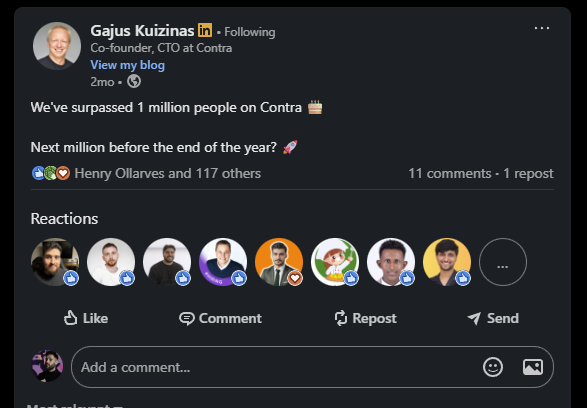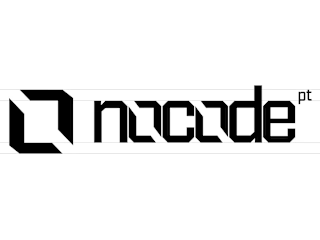Data Engineering: Analyzing Contra's Growth Plateau
The Platform Intelligence Project: Dissecting Contra's Growth Plateau in a $14.39B Market
A deep dive into freelance platform dynamics using first-party data scraping, competitive intelligence, and market analysis
When I first scraped Contra's user base in 2024, I was an outsider trying to understand the competitive landscape. Fast-forward one year, and I'm writing this as someone who's lived inside that ecosystem, watching a platform struggle with growth while the broader freelance market explodes around it.
This isn't just another market analysis. It's a real-time case study of what happens when innovative business models meet entrenched network effects, backed by proprietary data that most analysts simply don't have access to. With 107,237 user profiles scraped across 70 monthly cohorts, we can see patterns that press releases and public metrics never reveal.
The stakes are massive. The freelance platform market is projected to grow from $5.58 billion to $14.39 billion by 2030, representing a 17.7% annual growth rate. Yet despite this explosive market expansion, newer platforms like Contra are experiencing user acquisition slowdowns that tell a different story about who actually captures this growth.
What the Data Actually Shows
Building a comprehensive scraping system for Contra required solving several technical challenges. The platform organizes their user data chronologically through monthly sitemaps, providing perfect visibility into registration patterns. My TypeScript rewrite processed these systematically, fetching 107,237 user profiles across 70 monthly buckets with 20x concurrent requests.
What emerged from this data was striking. January 2024 marked Contra's peak with 4,478 new users, but by June 2025, that number had collapsed to just 881 new registrations. This represents an 80% decline during a period when the broader freelance market was experiencing unprecedented growth.
(nb. This method isn't without flaws; it might be that a sitemap entry is only created for a user once they hit an onboarding event, or manual activation - It was stated that there were 'over one million people on Contra' by CTO, Gajus, but if that's the case... where's the evidence of this?)

Most market analysts work with estimated data or survey responses. This analysis is different because it's measuring actual platform behavior month by month. Every data point represents a real user who joined Contra on a specific date, creating an unfiltered view of growth dynamics that companies rarely share publicly.
The Paradox: Market Explosion Meets Platform Stagnation
While Contra's user acquisition stalled, the broader freelance economy was reaching remarkable scale. Research shows 1.57 billion freelancers worldwide now represent 46.7% of the global workforce. In the United States alone, 76.4 million Americans freelanced in 2024, with projections reaching 86.5 million by 2027. These freelancers contribute $1.5 trillion annually to the U.S. economy, making freelance work a massive economic force.
This disconnect between market growth and individual platform performance reveals something fundamental about how digital marketplaces actually work. The freelance platform market isn't just growing—it's consolidating around players who understand network effects better than their competitors understand business model innovation.
Upwork demonstrates this dominance with commanding market position. The platform holds 41.28% overall market share and an even stronger 61.25% share in the talent marketplace segment. With $769 million in 2024 revenue and 855,000 active clients, Upwork has built the kind of network effects that create nearly insurmountable competitive advantages.
More clients attract more freelancers, which in turn attracts more clients, creating a reinforcing cycle that newer platforms struggle to break. This isn't just about having more users—it's about creating an ecosystem where participants find more value as the network grows.
The Zero-Commission Gambit: Why Business Model Innovation Isn't Enough
Contra's strategic approach centered on eliminating the 10-20% platform fees that competitors charge. For freelancers, this represents substantial value—someone earning $50,000 annually saves $5,000-$10,000 in fees compared to traditional platforms. The math is compelling, the value proposition clear, yet my data shows this innovation alone couldn't overcome network effects disadvantages.
The company raised $45 million in funding, including a $30 million Series B led by NEA, and positioned itself as a cross between LinkedIn and Shopify. Their portfolio-focused presentation and commission-free model addressed real freelancer pain points. Ben Huffman and Gajus Kuizinas, the founders, understood that existing platforms were extracting significant value without necessarily providing proportional benefits.
But here's what the user acquisition data reveals: pricing innovation without distribution advantages hits a ceiling quickly. Freelancers need consistent project flow to justify platform investment, creating a chicken-and-egg problem for newer platforms. No matter how much money freelancers save on fees, they can't build sustainable businesses without access to clients.
This dynamic explains why Contra's growth plateaued despite offering genuine value. The platform solved the wrong problem brilliantly—reducing costs rather than increasing opportunities. In marketplace dynamics, access to demand typically matters more than transaction costs.
Understanding Platform Hierarchy: Why Some Strategies Work
The freelance platform landscape has evolved into distinct tiers, each with different competitive strategies and success metrics. Upwork and Fiverr represent scale players who capture broad market segments through network effects and marketplace depth. Their revenue models depend on commission-based structures with enterprise upsells, and their competitive moats come from liquidity—having enough buyers and sellers to create consistent matching.
Toptal represents a different approach entirely. Rather than competing on scale or cost, they focus on quality through rigorous vetting processes. Their strategy of accepting only the top 3% of applicants allows them to charge higher commissions while providing genuine value through talent curation. Clients pay premiums because they trust Toptal's screening reduces hiring risk.
Contra and similar disruptors attempt business model innovation combined with niche positioning. Their challenge lies in building critical mass without incumbent advantages. Success requires solving specific workflow problems rather than just offering better economics.
The data suggests that vertical specialization combined with execution excellence offers the most viable path for platform disruption. Rather than competing directly with established players across broad markets, successful new platforms dominate narrow segments before expanding.
The AI Disruption Window: New Opportunities in Changing Markets
Current freelance market dynamics are being reshaped by artificial intelligence in ways that create strategic opportunities for new platforms. Research shows AI is causing a 21% decrease in automation-prone tasks like basic writing and coding, while 31% of freelancers now use AI tools regularly compared to 20% who use them occasionally.
More importantly, freelancers offering AI-enhanced services command 40%+ rate premiums, indicating that clients value AI integration when it's applied strategically. This creates a window for platforms that can integrate AI capabilities better than incumbents, building artificial intelligence as a competitive advantage rather than just a feature.
The key insight is that AI disruption affects different types of freelance work differently. Basic content creation and simple coding tasks are being commoditized, while complex problem-solving, strategy development, and creative work that leverages AI tools is becoming more valuable. Platforms that understand these dynamics can position themselves advantageously.
Strategic Framework: How to Actually Disrupt Entrenched Networks
The lessons from Contra's experience, combined with broader market analysis, suggest a clear framework for platform disruption that goes beyond business model innovation.
First, niche dominance beats broad market competition. Rather than trying to be everything to everyone, successful platform disruptors pick specific verticals or geographic markets and build the best possible experience for those segments. They achieve critical mass in focused areas before attempting expansion.
Second, workflow innovation matters more than pricing innovation. Platforms that solve real problems in how work gets done create switching costs through superior functionality. They build tools that make their platforms sticky, not just cheaper.
Third, measured expansion preserves quality while scaling. The most successful platforms resist the temptation to compete directly with incumbents on established turf. Instead, they use niche success to fund adjacent market entry, maintaining quality standards that differentiate them from commodity competitors.
Fiverr's expansion strategy demonstrates this approach. Rather than launching globally immediately, they methodically expanded from Europe to Latin America after establishing dominance in English-speaking markets. Each new market built on previous success while maintaining platform quality.
What the Data Predicts: Market Consolidation Accelerates
The combination of explosive market growth and platform consolidation suggests we're entering a phase where understanding network effects becomes more critical than optimizing business models. The freelance platform market will continue consolidating around players who build the most valuable ecosystems for both clients and talent.
Winners won't necessarily be those with the best technology or lowest prices—they'll be those who create the most effective matching mechanisms and provide the most valuable workflow tools. This means platform selection should prioritize opportunity volume and client quality over fee structures for freelancers, while businesses should evaluate platforms on their path to network effects rather than just their value propositions.
The patterns visible in Contra's sitemap data predicted their strategic challenges months before they became apparent in public metrics. This demonstrates why proprietary data analysis provides competitive advantages that traditional market research cannot match.
The Intelligence Advantage: Why This Analysis Matters
This research demonstrates the value of combining technical data extraction with strategic market analysis. While others rely on press releases and survey data, first-party scraping reveals actual user behavior patterns that inform strategic decisions. The ability to see platform growth dynamics in real-time, before they appear in quarterly reports or public announcements, provides substantial competitive intelligence advantages.
For businesses considering platform strategies, this analysis suggests that distribution advantages compound while cost advantages don't. The $14.39 billion freelance platform market continues growing explosively, but capturing that growth requires understanding why some platforms thrive while others plateau, regardless of how innovative their business models appear.
The freelance economy represents one of the most significant workforce transformations in modern history. Platforms that understand network effects, workflow optimization, and strategic positioning will capture disproportionate value in this transformation. Those that focus primarily on business model innovation without addressing fundamental marketplace dynamics will struggle to achieve sustainable growth, no matter how much capital they raise or how compelling their value propositions appear.
Like this project
Posted Jun 23, 2025
Analyzed Contra's user growth plateau using data scraping and market analysis.
Likes
0
Views
3
Timeline
Jun 23, 2025 - Jun 23, 2025
Clients

Contra







